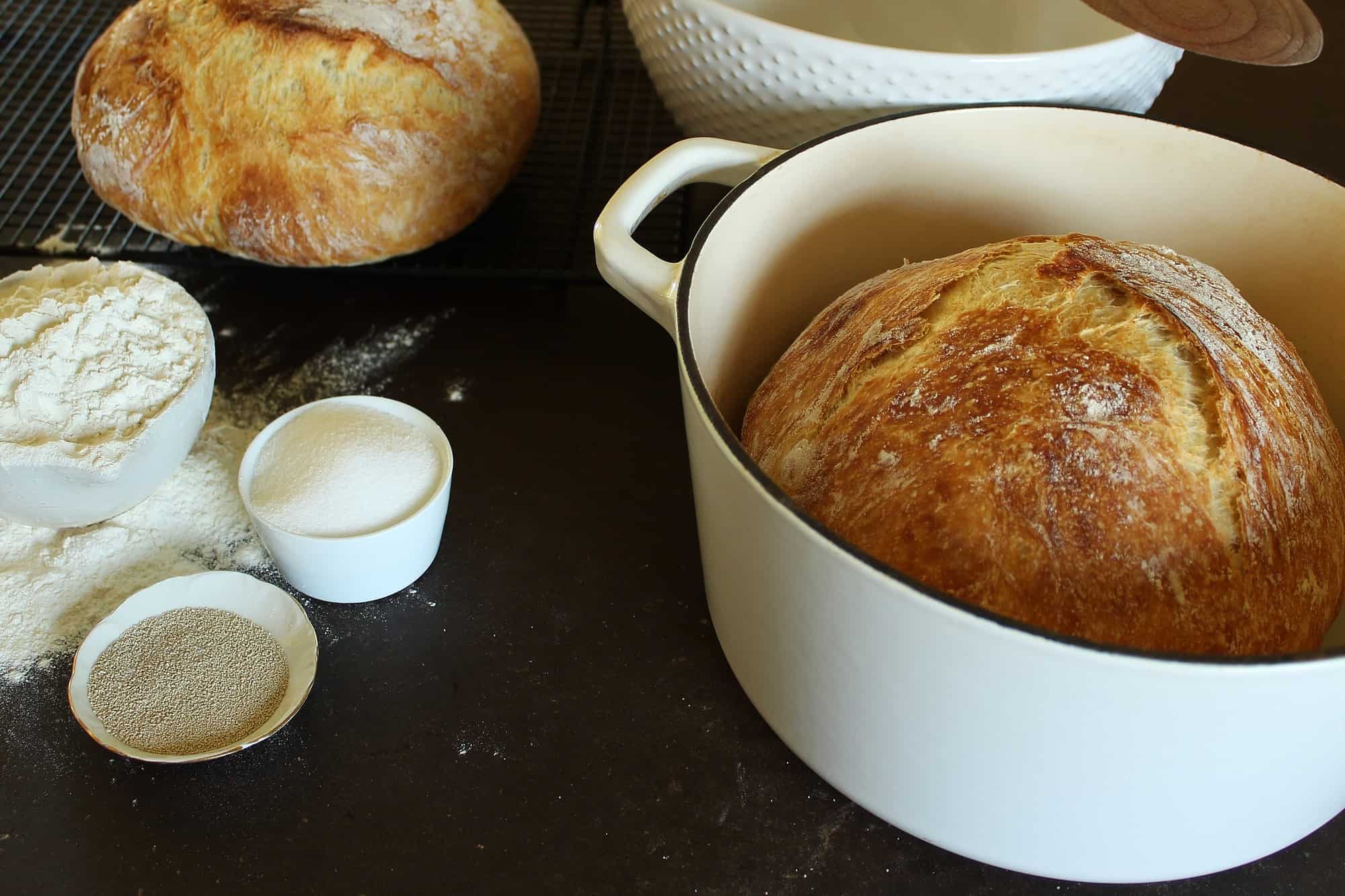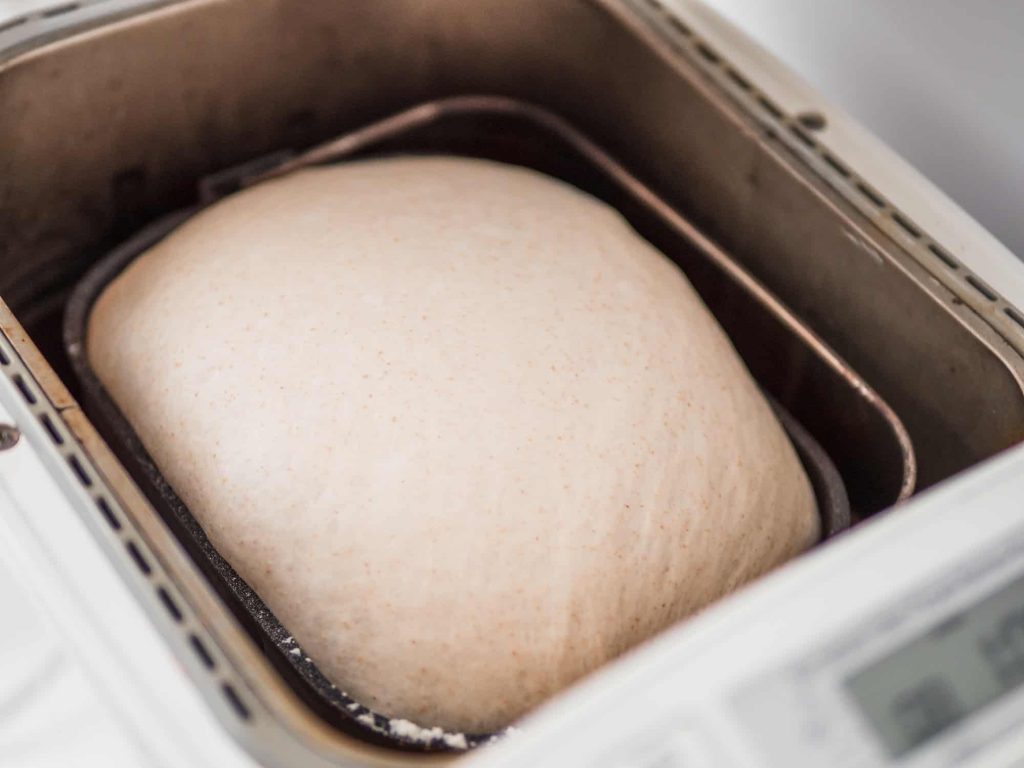Bread maker Vs Dutch oven, which is the best? Individual choices of kitchenware often vary. Every choice is dependent on either experience or the different information at everyone’s disposal. And this is a core determining factor of people’s preferences.
A Dutch oven perfectly mimics the environment of professional bakers — its chamber is a moisture-sealed type and gives off intense radiative heat.
The walls of the Dutch oven are made of thick cast irons that provide widely extended thermal mass. This solidly means stability in the baking environment. The presence of moisture in this oven during the early baking process helps to add to the crust color spectrum and deepens the color of the crust.
The bread maker on the other hand mixes the bread ingredients, proofs and kneads the dough, and then bakes it. All you need to do is to measure the ingredients and put them inside the baker pan, thereafter, push the required buttons where need be.
The baker comes with a dough cycle that helps you to take out the dough from it and shape it by hand after proofing it. This is an important feature for making sweet bread, rolls, shaped savory or pizza crust.
Bread Maker vs Dutch Oven Similarities
Here are the similarities between these two bread-making machines. One is made primarily to make bread and the other can bake bread and many other things.
- Both allow you to make affordable pieces of bread compared to the ones stored in shops.
- Both of these devices make tasty and healthy bread.
- For the purpose of customization, both allow you to add extra ingredients to your taste.
Bread Maker vs Dutch Oven Differences
Here’s how these two machines stack up against each other.
- In terms of moisture they produce, one does it better, can you guess this?
- Steps involved and time management.
- Loaf volume.
1. Moisture
When baking in an enclosed environment, the primary idea is to keep the moisture that evaporates from the dough. It’s cool that the Dutch oven copies the professional bread pattern that has a good steam function.
The steam moistens up the bread and allows for a finer crust. When people using other kitchenware aim for this same result, what they do is squirt some water after putting the bread in, or put in ice cubes. But then, the downside to this is a temperature drop in the appliance.
This is one problem that the Dutch oven method has successfully avoided.

2. Steps involved and time management
One of the pros for the bread maker is that it typically just involves two steps. The first step requires that you put everything in. The second step is when you take it out.
This covers up for the hurdles that involve using Dutch ovens where you have to deal with the mixing process and wait for it to rise a few times. It also requires your presence to shape it. It definitely will rise again, and you have to wait until it is done.
While the use of other appliances is presence-demanding, you are not faced with the same chore when using a bread maker.
3. Loaf volume
The absence of steam in the bread maker during the early baking process causes the dough to expand rapidly and immediately forms a solid crust in the exterior. And the fact that the crust forms quite too early places limitations on the desired end result.
As such, there are limitations on the overall loaf volume, resulting in denser and squatter loaf.
So what’s the point of a bread maker?
A bread maker permits you to just put your desired ingredients into the machine and allow it to process a fine bread. The point of a baker is to help people with tight schedules simultaneously carry out more than one activity at a time while eliminating the call of delay.
What is cooler than waking up to the aroma of freshly baked bread one fine morning? The use of this baking appliance is mostly employed by people in different fields of workers whose jobs are time demanding.
Another cool thing about the bread baker is the fact that it is multipurpose and can be used for making jam, rice dishes, scrambled eggs, and even cakes.
Is a bread baker better than an oven?
Yes, it is better than the oven. The machine is a whole lot easier to operate and saves time, unnecessary expenses. With this, you can still have your homemade freshly baked bread without necessarily having prior knowledge of what baking entails as using ovens demands. Besides, it allows you to make many loaves at a time. Its different settings allow for specialty bread too.
Is it worth getting a bread maker?
Of course, it is worth it. You should have one as it guarantees extra convenience and is penny-worthy. The fact that it eliminates the need for supervision and places you on a scale of assurance of having good bread regardless of happenstance just makes it awesome.
Besides, it is one of the few economical choices out there. It cost between $50-60.
The amount of bread you will be making will determine the time it would take before you would have recovered the cost of the bread baker. Soon, you’d start saving your money.
Is it cheaper to make your own bread with a bread baker?
Yes, it is. If you really consume the product (bread), bread baking is actually cheaper compared to buying from stores.
Just like it is with most causes — baking your bread improves with constant practice. And it is a lot healthier as you will always only have to consume freshly baked bread.
A loaf of bread costs $2.5 and getting a baker for $6 — that makes a single loaf.
You can get one pound of king Arthur flour for a dollar. You can also get a cake of yeast for $1.50 for a half-ounce. And one ounce of yeast can be sufficient to bake 96 loaves of bread, and this goes for 26 pence. Calculating per kilowatt, electricity at the rate of 10 cents.
If the bread baker pulls in 2600 watts, then every hour takes 10 cents. This means, the cost of will taken to bake two pieces of bread has been slashed down in half when you bake two pieces of bread.

